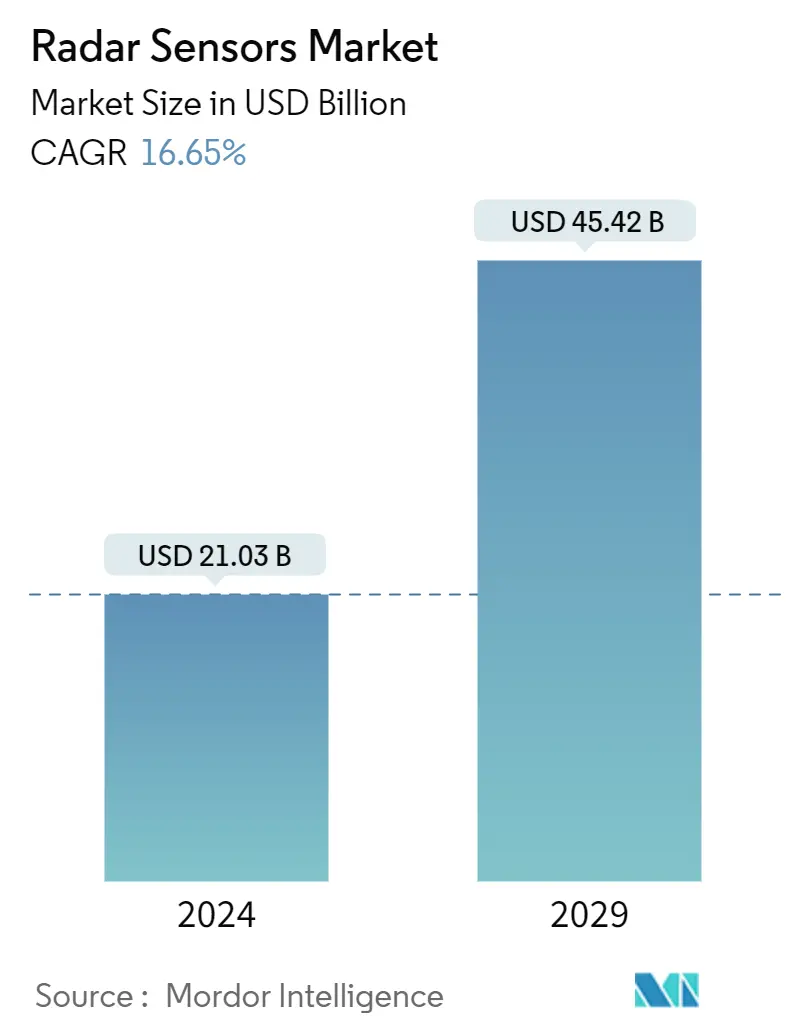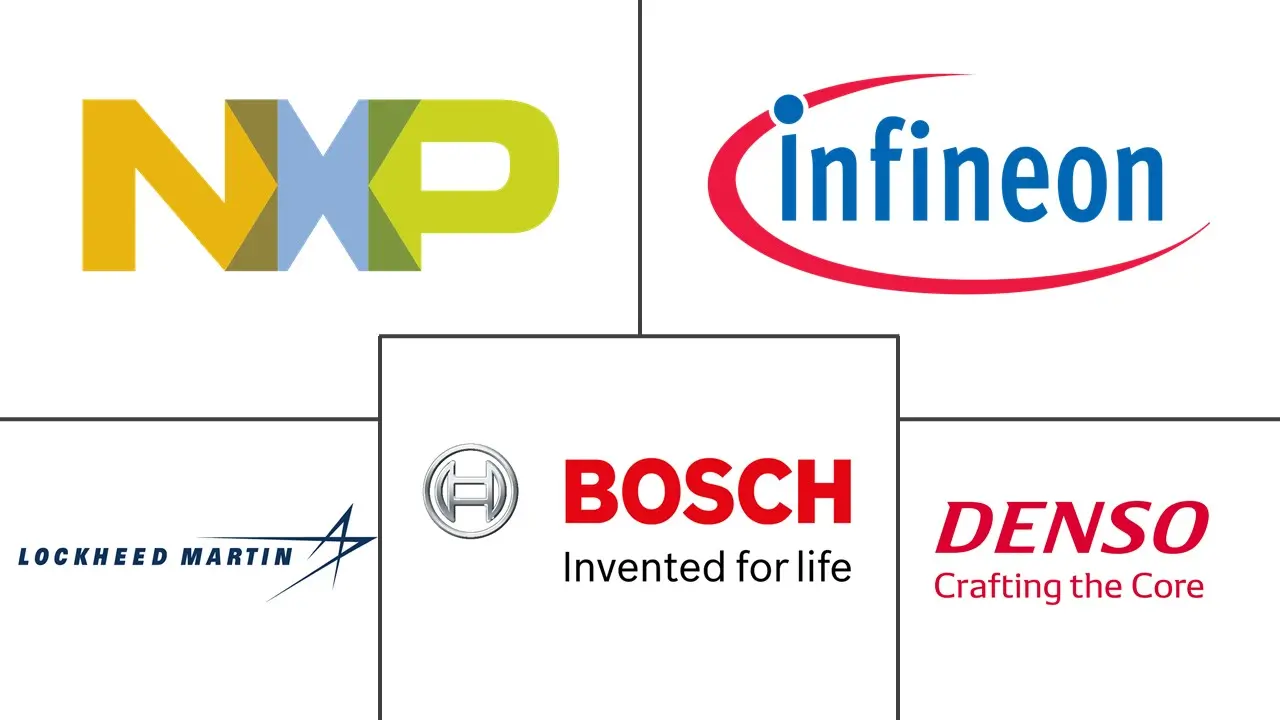Market Size of Radar Sensors Industry

| Study Period | 2019 - 2029 |
| Market Size (2024) | USD 21.03 Billion |
| Market Size (2029) | USD 45.42 Billion |
| CAGR (2024 - 2029) | 16.65 % |
| Fastest Growing Market | Asia Pacific |
| Largest Market | North America |
Major Players
*Disclaimer: Major Players sorted in no particular order |
Need a report that reflects how COVID-19 has impacted this market and its growth?
Radar Sensors Market Analysis
The Radar Sensors Market size is estimated at USD 21.03 billion in 2024, and is expected to reach USD 45.42 billion by 2029, growing at a CAGR of 16.65% during the forecast period (2024-2029).
The Radar Sensors Market size is estimated at USD 21.03 billion in 2024, and is expected to reach USD 45.42 billion by 2029, growing at a CAGR of 16.65% during the forecast period (2024-2029).
The rapidly increasing automation, such as the developments toward autonomous driving and the progression of Industry 4.0, indicates the increasing demand for presence and motion detection for enhanced safety and control, driving the need for radar sensors.
Consumer demand for automobiles is responsible for the market's expansion. For instance, around 290.8 million registered cars in the US in 2022. Since last year, this proportion has climbed by 0.4%. As a result, the need for radar sensors is anticipated to increase. Additionally, automobiles often use radar sensors for features like rear cross-traffic alert (RCTA), lane change assistance, collision prevention, and blind spot detection (BSD).
Furthermore, due to low-cost, high-frequency components, innovative packaging concepts, and cutting-edge production processes, radar sensors are no longer bulky and expensive. These are cost-effective solutions for measuring jobs inaccessible to traditional optical or acoustic/ultrasound equipment.
The applications of radar sensors are becoming more diverse, and commercialization in the sector is accelerating owing to significant advancements in digital and RF/microwave technologies. There are various radar applications, from traditional defense and surveillance to automotive radar for driver assistance to biomedical radar for imaging, monitoring, and treatment. The competitive environment demands rapid design cycles, system integration, prototyping, and testing for all these applications.
Due to affordable high-frequency components, novel packaging solutions, and advanced production processes, radar sensors are no longer huge and expensive. They are low-cost solutions for measurement tasks that cannot be delivered with traditional optical or acoustic/ultrasound systems. The market for radar sensors is dominated by the automotive, industrial, and building automation solution segments, owing to the increasing demand for precision in detection.
Vendors in the market offer radar sensors based on range and technology (continuous and pulsating). Long-range radar applications are based on 77-GHz frequency. However, 79GHz also gains traction for short and mid-range applications, like industrial and automotive, owing to the higher form factor with 3X smaller antennas. It also has the benefit of a wide frequency band of 4GHz (77 to 81 GHz). Furthermore, the implementation of corner radar for 360-degree car surveillance, supported by short- and mid-range radars of 24 GHz, is gaining traction for high-resolution tracking. This enhances target separation or object recognition with high channel numbers for high-resolution imaging radar.
However, factors such as limited field of vision and limitations in the detection capabilities, when there is a speed difference between vehicles are some of the major factors challenging the growth of the studied market.
